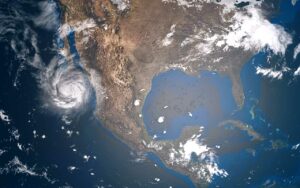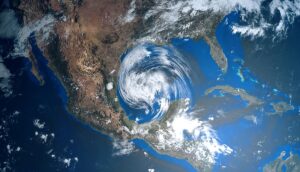Amid climate change, the next looming crisis is a water crisis. California has already cut off farmers, but as drought worsens, the state took this unprecedented step. Could other states take similar action soon?
California takes unprecedented step amid water crisis
As scientists put the blame on climate change for a variety of weather disasters, many are in agreement that the next big crisis the United States, as well as countries around the world, need to prepare for is a water crisis.
California already cut water supply to farmers, despite the state providing 25% of America’s food
Federal officials announced that California farmers, who are enduring a third year of severe drought, should not expect to get any more water from the Central Valley Project this year. California’s Central Valley supplies one-quarter of America’s food supply. A lack of water isn’t only a hydration issue, it’s a food issue. California’s Central Valley produces the bulk of US fruits, nuts, and vegetables.
In 2021, the federal government took a similar step, allocating only 5 percent of the Central Valley Project water supply to farmers, but as the drought intensified, the year ended with zero available.
At the same time, the federal government allocates 25 percent of water from the Central Valley Project water supply for drinking and industrial uses.
“It’s devastating to the agricultural economy and to those people that rely on it,” said Ernest Conant, regional director for the U.S. Bureau of Reclamation. “But unfortunately we can’t make it rain.”
As California enters its third year of severe drought, rain and snowfall are far below historical averages, KTLA reported.
California announces new water cuts affecting 19 million people
One of the largest water suppliers in the state, the Metropolitan Water District of Southern California, declared a water shortage emergency on Tuesday, NBC reported.
Cities in Southern California must cut their outdoor watering to only one day per week. The mandate goes into effect on June 1 and cities are required to enforce it or face hefty fines. About 6 million people will be affected by the mandate.
“We don’t have enough water supplies right now to meet normal demand,” said Metropolitan Water District spokesperson Rebecca Kimitch. “The water is not there. This is unprecedented territory. We’ve never done anything like this before.”
Other Western states face water crisis
Water from the Colorado River and the State Water Project is used by the Metropolitan Water District to supply 26 public water agencies that provide water to 19 million people, or 40 percent of the state’s population.
The Colorado River aqueduct provides water to about 19 million people in Southern California, Las Vegas, Nevada, as well as Phoenix and Tucson Arizona. The river also runs through Utah and Wyoming.
The Colorado River is the most endangered river in America, impacted by the climate crisis and outdated water management. Water from the river is in high demand as it supplies water needs for Las Vegas (90%), Tucson (82%), and San Diego (66%). Los Angeles, Phoenix, and Denver also draw large portions of their water supplies from the river, CNN reported.









